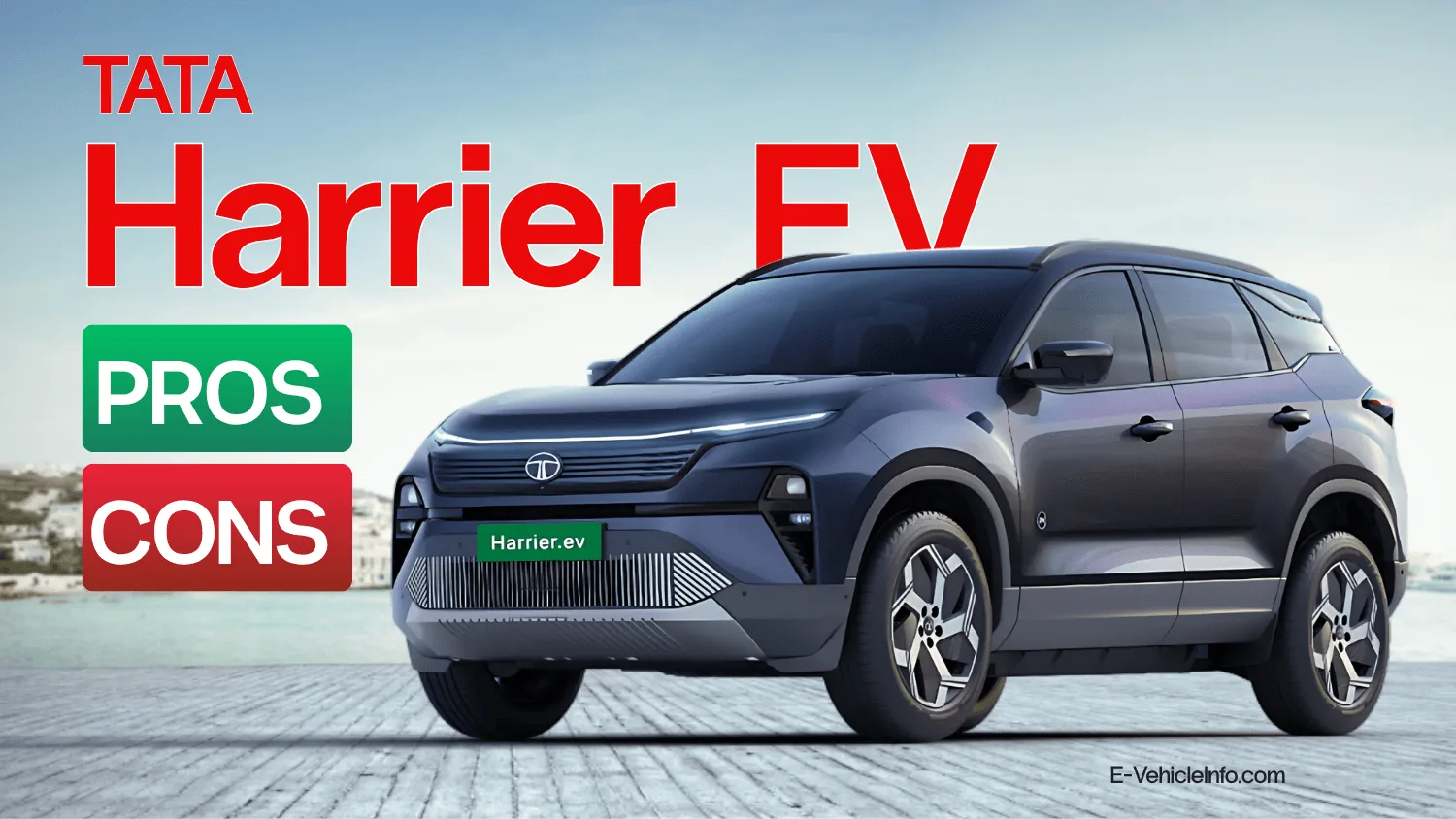
Gagan Choudhary, one of India’s trusted automotive content creators with over 1.89 million YouTube subscribers, recently shared his in-depth experience with the Tata Harrier EV.
Filmed during a full-day drive across the National Capital Region (NCR), the video focuses on the top-of-the-line QWD (Quad Wheel Drive) variant.
Here’s a complete breakdown of the Harrier EV’s specifications, real-world performance, features, pros and cons, and who it’s best suited for.
Dual Motor Setup: 158 hp front motor + 238 hp rear motor
Total Output: 396 bhp
Peak Torque: 504 Nm
0-100 km/h (claimed): 6.3 seconds
Top Speed: 180 km/h
Drive Modes: Eco, City, Sport, and Boost
Battery: 75 kWh LFP (Lithium Iron Phosphate)
ARAI Range: 622 km
C75 Real-World Estimate (Tata): 460–490 km
Charging Time: 20–80% in 25 minutes with a 120 kW DC fast charger
Observed Range: ~414–436 km in mixed conditions
Efficiency: 5.81 km/kWh (during highway-biased driving)
Expected City Range: 400–450 km in everyday use
Cruising Stability: High-speed performance remains stable
Aerodynamic Efficiency: Helps maintain range
Power Delivery: Smooth and consistent across all modes
Impressive acceleration: 0-100 km/h in 6.3 seconds — matches performance SUVs in higher segments.
Smooth power delivery: The dual-motor AWD setup ensures balanced torque distribution, providing confident launches.
Ride quality: Independent suspension with Frequency-Selective Dampers (FSD) offers excellent bump absorption.
Handling: Despite its size, the SUV feels composed at high speeds and shows minimal understeer during spirited driving.
True 400+ km range: Real-world range of 414–436 km observed — enough for intercity drives or 3–4 days of urban use.
Fast charging capability: 20–80% in just 25 minutes via 120 kW DC fast charging — practical for long journeys.
Efficient in city and highway: Achieves ~5.8 km/kWh on highways, thanks to aerodynamic efficiency and regenerative braking.
Advanced driver tech: Level 2 ADAS, 540-degree camera, digital key, remote park assist with summon mode.
V2L & V2V: Vehicle-to-Load and Vehicle-to-Vehicle features add functionality, especially for power backup or roadside charging.
Premium interiors: Well-appointed cabin with quality materials and improved finish over the ICE Harrier. You can read our guide here: Tata Harrier EV vs Tata Harrier Diesel
: Which One Should You Buy?Solid road presence: Retains the bold Harrier silhouette with EV-specific design enhancements.
Frunk space: 67L in RWD, 35L in AWD — adds utility missing in many EVs in this range.
All-wheel drive: Rare in its segment, offering true versatility for challenging terrain or poor weather conditions.
Spongy brakes: Several reviewers, including Choudhary, noted a lack of brake bite and feedback.
Software glitches: Touchscreen lag and occasional system hiccups have been observed — these issues are likely to be addressed in future OTA updates.
Body roll: Due to SUV height and weight, mild roll is felt during hard cornering — not a deal-breaker, but noticeable.
Service ecosystem: EV-specific servicing and troubleshooting infrastructure is still catching up, especially in smaller cities.
Unproven long-term reliability: As with most new EVs, concerns remain around the longevity of high-end electronics and sensors.
Premium pricing: Top-end variants nearing ₹30 lakh put it in competition with better-established ICE SUVs and some luxury EVs.
| Variant | Battery | Power | Range | Ex-showroom Price |
|---|---|---|---|---|
| Adventure 65 (Base) | 65 kWh | 235 bhp | 538 km | ₹21.49 lakh |
| Empowered QWD 75 (Top) | 75 kWh | 390 bhp | 622 km | ₹28.99 lakh |
| Empowered QWD 75 Stealth | 75 kWh | 390 bhp | 622 km | ₹29.74 lakh |
The Tata Harrier EV enters a fast-growing mid-size electric SUV segment. Key competitors include:
Mahindra XEV 9e – a direct rival with similar specifications
BYD Atto 3 – an established international EV player
Hyundai Creta Electric – an upcoming mainstream alternative
The only AWD option in this price segment
Builds on the success and familiarity of the ICE Harrier
Aggressive pricing relative to the tech and performance it offers
Gagan Choudhary’s review presents the Tata Harrier EV QWD as a well-rounded electric SUV that blends performance, practicality, and cutting-edge features. It’s not just an electrified version of the ICE Harrier—it’s a thoroughly re-engineered EV tailored for Indian buyers.
Buyers seeking AWD capability in an EV
Enthusiasts who want performance and tech-rich features
Long-distance drivers needing 400+ km real-world range
Tata loyalists transitioning to electric mobility
You’re comfortable being an early adopter with occasional software updates
You’re aware that service support for EV tech may still be expanding
You’re okay with premium pricing for top-end variants
With its blend of speed, range, tech, and design, the Tata Harrier EV is a serious contender in India’s electric SUV space.
Gagan’s detailed, real-world review provides valuable insights for anyone considering this feature-packed EV for their next powerful electric SUV.
Disclaimer:
This article is based on information shared by Gagan Choudhary on his official YouTube channel and has been reviewed and verified by the editorial team at e-vehicleinfo.com. All specifications and insights reflect the details available at the time of publication.
This post was last modified on July 24, 2025 10:15 am
Montra Electric, the clean mobility brand from the prestigious Murugappa Group, has launched the All-New Super Auto, a next-generation electric…
Union Minister Nitin Gadkari (Minister of Road Transport and Highways of India) has once again made a bold statement that’s got…
India’s electric four-wheeler (E4W) market slowed in September 2025, following a record-breaking August, with 15,038 units sold, representing an 18%…
India’s EV market hit 1,04,056 electric two-wheeler sales in September 2025. TVS, Bajaj, and Ather led the chart, while Ola…
India's electric two-wheeler market is growing at a record pace. In July 2025, over 1.2 lakh electric two-wheelers were sold,…
The future of mobility in India has taken a major leap forward. Omega Seiki Mobility (OSM), led by Founder Uday…
This website uses cookies.